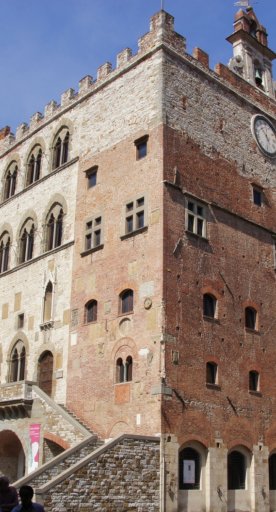
Cavalciotto di Santa Lucia
From artificial canal to industrial archaeology: a testimony to Prato’s manufacturing past
The Cavalciotto di Santa Lucia is a historic fishery located in the district of Santa Lucia in Prato, dating back to the 11ᵗʰ century. This monument represents one of the most significant examples of industrial archaeology in the city, testifying to medieval ingenuity in water resource management.
The Cavalciotto di Santa Lucia was built to divert the course of the Bisenzio River, creating the “Gorone,” a wide artificial canal that runs through the territory of Prato. This water system served multiple purposes: reclamation of marshy lands, agricultural irrigation, defense and—most importantly—provision of power for the mills. The first documentation of a mill fed by the Gorone dates back to 1003, highlighting the importance of this resource for the area’s economic development.
Over the centuries, the mill ponds and mill system evolved, supporting productive activities such as metallurgy, papermaking and, in particular, the textile industry. The presence of numerous waterworks helped solidify Prato as one of the most important textile centers in Europe.
Today, the Cavalciotto di Santa Lucia is a site of historical and cultural interest, included in itineraries dedicated to industrial archaeology. Its preservation provides an understanding of Prato’s historical roots and the evolution of its urban landscape. In addition, the site provides opportunities for educational activities and guided tours, promoting an awareness of local heritage. The surrounding area has an attractive natural environment, ideal for walks and outdoor activities.









